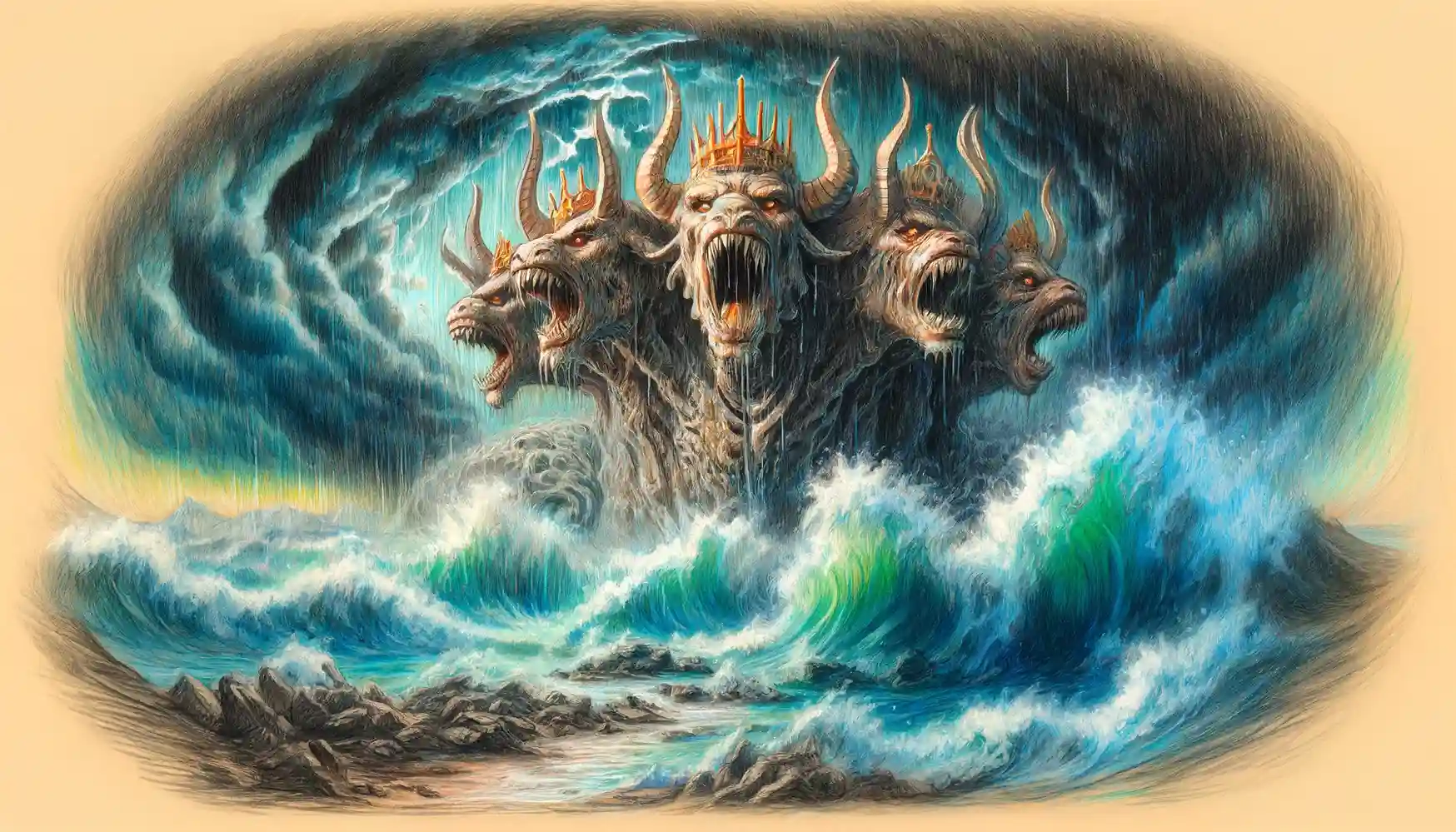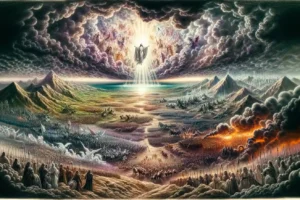
The Rise of a Global Leader (Antichrist)
The figure commonly referred to as the “Antichrist” in Christian eschatology is depicted through various prophetic scriptures across the Old and New Testaments, illustrating the rise of a global leader who will exert significant influence and authority before the end times. Here are quick facts drawn from Daniel 7:23-25, 2 Thessalonians 2:3-4, and Revelation 13:
- Daniel 7:23-25: This passage from the Book of Daniel describes a fourth kingdom on earth, which will be different from all other kingdoms. It will devour the whole earth, trampling it down and crushing it. A king will arise, speaking out against the Most High and oppressing the saints, intending to change the set times and laws. The saints will be handed over to him for a time, times and half a time.
- 2 Thessalonians 2:3-4: Paul warns about the coming of the “man of lawlessness” or “the son of destruction.” This figure opposes and exalts himself above every so-called god or object of worship, taking his seat in the temple of God, proclaiming himself to be God. Paul emphasizes that this rebellion (or apostasy) must come before the Day of the Lord.
- Revelation 13: John’s apocalyptic vision in Revelation describes a beast rising out of the sea, granted authority by the dragon (Satan) over every tribe, people, language, and nation. All inhabitants of the earth will worship the beast, whose fatal wound was healed. This beast was given power to wage war against God’s holy people and to conquer them, and he was given authority over every tribe, people, language, and nation.
The concept of the Antichrist as a formidable, global leader in the end times emerges from an amalgamation of prophetic texts across the Bible. This figure epitomizes ultimate rebellion against God, manifesting through deception, blasphemy, and persecution of the faithful. The passages in Daniel 7:23-25, 2 Thessalonians 2:3-4, and Revelation 13 provide a framework for understanding this complex character and his role in eschatological narratives. Here is a detailed analysis of each passage:
Daniel 7:23-25
In the context of Daniel’s vision of the four beasts, which symbolize successive empires, the fourth beast represents an ultimate, tyrannical kingdom. Unlike its predecessors, this kingdom is described as terrifying, powerful, and exceedingly brutal. The ten horns that arise, and particularly the little horn that speaks boastfully, suggest a series of rulers culminating in one exceptionally dominant and blasphemous leader. This leader will attempt to make alterations to divine law and time itself, representing a direct challenge to God’s authority. His rule is noted to last “a time, times, and half a time,” which is commonly interpreted as three and a half years, a significant period in apocalyptic literature, denoting a time of severe trial and tribulation.
2 Thessalonians 2:3-4
Paul’s discussion in Thessalonians is set within a discourse on the conditions preceding the Day of the Lord. He identifies the emergence of the “man of lawlessness” as a key sign of the approaching end. This individual is characterized by his opposition to God, elevating himself in God’s place within the temple, symbolizing ultimate apostasy. This act of sitting in the temple of God, declaring himself to be God, is an act of significant theological inversion and desecration. Paul uses this prediction to admonish the church not to be deceived by anyone claiming that the day of Christ has already come.
Revelation 13
Revelation 13 expands the imagery surrounding this antichrist figure by introducing a beast from the sea, which is given power and authority by the dragon, identified as Satan. This beast symbolizes both a kingdom and its ruler, echoing the themes of Daniel’s fourth beast. The beast’s miraculous recovery from a fatal wound and its subsequent worldwide worship reflect not only political power but also a counterfeit resurrection, mimicking Christ’s death and resurrection to deceive even more profoundly. The beast’s war against the saints and dominion over all tribes and nations signify the widespread impact and nearly uncontested power he will hold during his reign.
Theological Implications
These passages collectively contribute to a theological understanding of the Antichrist as not merely a political figure but as a profound spiritual adversary. His rise is associated with significant deception, miraculous signs, and wonders, and a blasphemous challenge to the very core of monotheistic worship. The Antichrist’s role is to lead the world away from the truth of God, making him a central figure in eschatological events that test the faith and endurance of believers.
Conclusion
The detailed portrayal of the Antichrist across these scriptures serves to warn believers of the severe trials and challenges to faith that will characterize the end times. It also reinforces the need for vigilance, perseverance in faith, and adherence to the teachings of Christ and the prophets. The ultimate defeat of the Antichrist, as prophesied, confirms the sovereign rule of God and the establishment of His eternal kingdom, as depicted in the subsequent chapters of Revelation. This eschatological promise provides hope and encouragement amidst the foretold tribulations.



